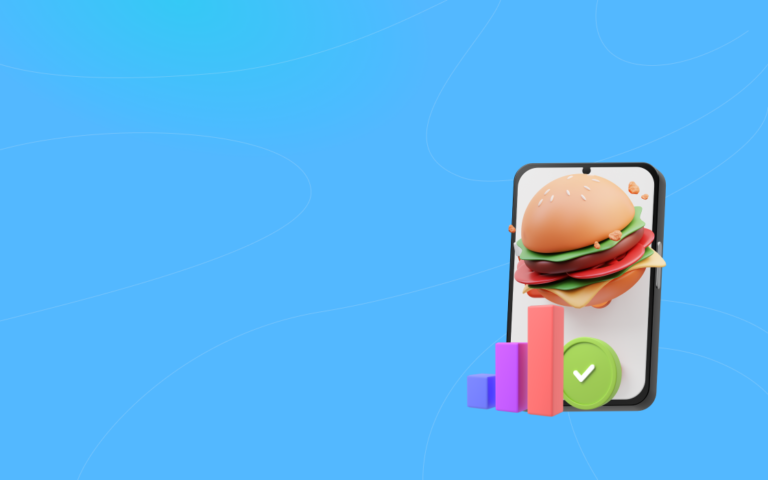Customer Experience: Brick-and-Mortar Restaurants vs Delivery Services

Actionable data insights would be a valuable asset for any type of kitchen. However, to truly understand the real value of data for cloud kitchens, you need to comprehend the difference in customer expectations from traditional restaurants and food delivery from ghost kitchens.
While customers might forgive brick-and-mortar diners’ issues like long waiting times because they grew fond of ambiance or got fascinated by charismatic waiters, cloud kitchens can’t rely on something similar. They don’t have a front house, and the staff does not interact with customers, so there are no sentimental, personal components that might outweigh operational problems.
Hence, clients will judge cloud kitchen services more strictly, as they want their meals to be prepared and delivered in the shortest time, and their quality should match the expectation they formed.
And most likely, if you fail once, you won’t get a second chance, as the competition is intense, and any client can find other delivery that will fulfill their expectation of fast, consistent, and quality services.
How Data сan help сloud kitchens resolve the main customer success challenges
To be able to fulfil customer expectations, cloud kitchens should know in details everything regarding their business, starting with how their processes are built and ending with what menu positions drives the most profits. The basis for this knowledge is data.
The right data will help you to make informed decisions to grow your cloud kitchen business and enhance relationships with your customers, and here are the three specific improvements you can achieve.
Process Optimization

Streamlined, closely monitored processes are the first step to reducing the order time and ensuring the quality of delivered food. Any misstep during the order lifecycle can be optimized, but only if you know what exactly the problem is and what causes the bottleneck that slows the process down.
So, what processes should you monitor to optimize?
Order Acceptance
If you use different unsynchronized solutions to accept and then transfer them to the kitchen, you are losing time and potentially risk making a mistake and accidentally losing one of the orders, among others. Streamlining the order transfer through a unified system would help avoid delays and monitor the time you spend receiving and transferring the order.
Food Preparation
Do you use your kitchen efficiently? Do some menu items usually get stuck because the necessary appliance is occupied? Creating rules on how the food travels through the kitchen will remove the major bottlenecks and will enhance the whole order fulfillment process, which is an end goal we are pursuing.
So, you will be able to achieve this with monitoring and tracking, and, in turn, it will also help you to set up realistic estimations for each order to be prepared and delivered.
Dispatching
You need to match your food preparation with a delivery pick-up. If you finish the order before the driver comes, you risk having a cold meal delivered to the client, which means dissatisfaction, possible bad review, and a lost client.
In the vice-versa case, when the driver arrives earlier than the order is ready, you risk having a crowd of deliverymen in front of your door and confusing orders between drivers. This, in turn, might also lead to clients’ discontent.
Hence, you need to know how long it takes you to prepare an order and how long it takes the driver to pick it up, analyze data and understand at what step you should call for the deliveryman.
Menu Optimization
Besides operational data, cloud kitchens can benefit greatly from sales data. Every kitchen collects data about the orders placed and delivered, but only a few use it to their advantage.
The key to efficiently leveraging this type of data is to divide and analyze it by different attributes, like the brand you sell different cuisine and positions, time of day, channel you sell, etc. Such division can help you to reveal valuable insights, like what cuisine interests your clients the most, what dishes are usually ordered in pairs, what dishes are the most popular during dinner time, and so on. These tendencies can show you opportunities for your business to expand your current menu or even add a new brand for a demographic within your customer base you haven’t noticed and catered to.
Forecast Optimization
Detecting upcoming trends beforehand will give a competitive edge to your cloud kitchen. With the right data, like customer preferences and sales data, you will be able to come up with a new, trendy menu option before any other delivery reaches your customers with the same offering.
However, to get to this level of prediction, you should have a vast amount of available, reliable data for a long period of time so you would be able to see changes in customer behavior patterns and compare them with previous shifts and their impact on customer expectations and your business.
Improve your Cloud Kitchen performance with Data
Get answer within 24 hours
How to efficiently collect your Cloud Kitchen Data
The real potential of data for cloud kitchens is enormous. However, being a relatively new concept, most cloud kitchens still lack the technology to facilitate efficient and dependable data collection and processing.
The main challenge is the software: usually, a cloud kitchen uses several scattered, legacy solutions, each responsible for one function (e.g., a POS system for order processing and payments, a stand-alone system for online ordering, a separate key for inventory management, etc.).
Apart from sometimes being inefficient and slowing down the work, they also create data silos, which makes data pieces hardly accessible and disconnected.
The lack of data integration will make it almost impossible to achieve the improvements we described previously. Only by having a consistent flow of data, which would be stored in one place, will you gain visibility over all of your processes and detect patterns you can later turn into business opportunities.
So, how can you achieve the required integrity and data availability level? The solution would be to implement a unified platform that will power up data-driven processes and unite your workflow into one system.
When everything — brands, orders, margins, clients, deliverymen, etc. — is processed within one solution, you can move from obsolete software and intuitive assumptions to streamlined operations and weighted strategical decisions backed by quality data.
Unified software solution as a centerpiece for Data strategy in Cloud Kitchens
- kitchen management;
- route orders;
- online ordering;
- menu management;
- inventory management;
- driver dispatching;
- driver management;
- accounting and payment management;
- employee management;
- data visualization and analytics.
Another important aspect for ghost kitchen software is to operate in offline mode, as often the kitchens are based in the basements, where Internet connection might be poor.

The functionality of your solution might vary depending on your requirements and conditions. There are two paths you might take to fulfill your need for the right software solution: you can look for pre-made software and adopt it. However, such solutions have a limit in their customization capacities, and it won’t be able to cover all of your requirements. Hence, you might go for the other option and choose to develop custom software for your cloud kitchen.
The custom solution would be tailored to your business and if done right, it would serve you for many years. Moreover, having your own solution would relieve you from the need to rely on third-party providers and their support teams.
Altamira can help you to go through the process of developing your own solution. For more than a decade, we create software solutions for businesses of different industries, including cloud kitchens. Our team also includes data architects who would help you to set the data management strategy to access its full potential and improve the performance of your ghost kitchen business.
Data Strategy for Cloud Kitchen
Turn your cloud kitchen into the data-enabled business with Altamira
In Conclusion
All cloud kitchens own data, but only a few really know how to get the most out of it. The key is to keep data relevant, integrated and visible in every process you go through. However, without a sufficient tech stack, it is almost impossible to set up data-driven operations and analytics.
Usually, cloud kitchen businesses lack the necessary tech expertise to set up data strategy and leverage implement a unified software solution, but with the help of a reliable software vendors, these issues can be easily resolved.
This strategy implies that businesses use the data they obtain to improve customer services to fulfill clients’ needs and wishes. Companies need to efficiently collect, organize and analyze data to extract business value from it to make it work.






